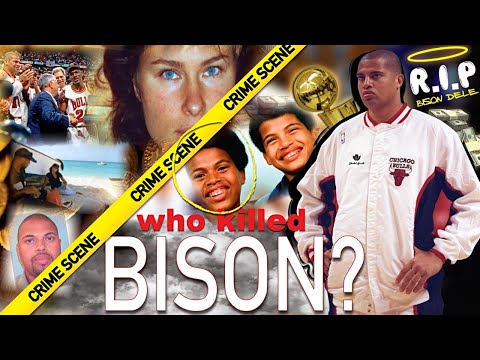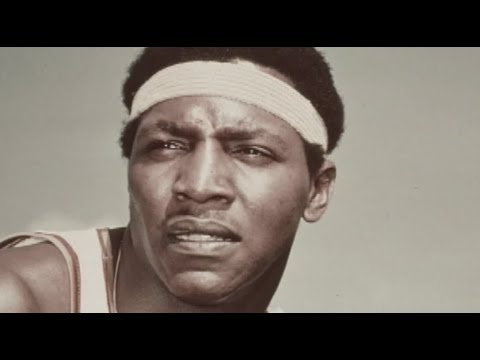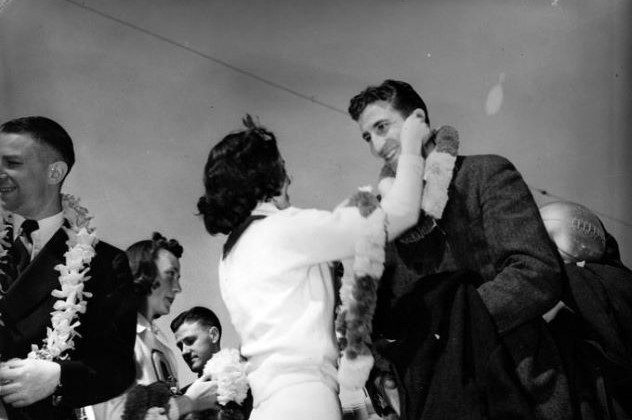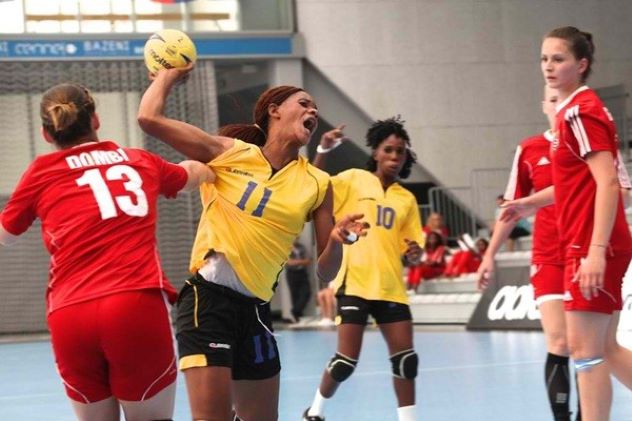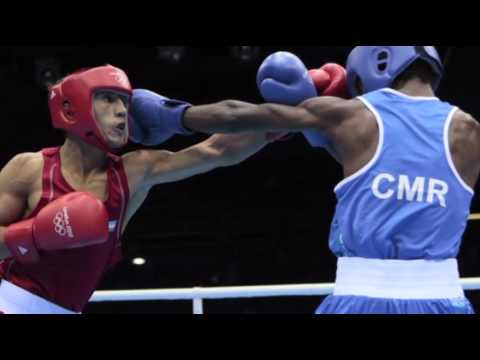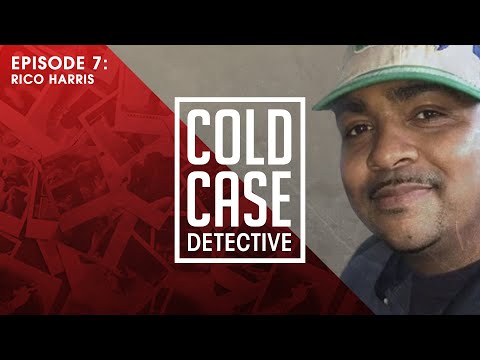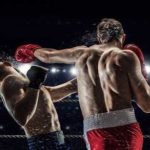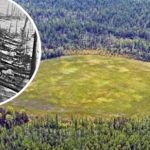When the missing person is well known, the emotional upheaval is magnified even further. In the case of pro athletes and amateur sports stars like the ones on this list, their disappearances brought shock to many. Fans who’d grown accustomed to watching them compete heroically were left without answers about their fates. Sadly, the star athletes on this list were never seen again after going missing. Loved ones may yet hold out hope, but answers haven’t come. What happened after their final known moments may never be revealed.
10 Bison Dele
Bison Dele was born Brian Williams but asked others to refer to his chosen name after reaching the NBA. His basketball career started slowly, but Dele persisted through the 1990s. While hopping from team to team, he won a championship with the Chicago Bulls in 1997. Two years later, the Detroit Pistons offered him a $35 million contract. It should have been the culmination of his long career as a journeyman, but he turned it down. In fact, Dele walked away from the game altogether that year. He was seeking something else in life. So he bought a yacht and sailed halfway around the world. Dele was in the South Pacific Ocean in 2002 with his girlfriend, Serena Karlan, his older brother, Miles Dabord, and the captain Dele had hired named Bertrand Saldo. Something horrible happened out in the deep ocean near Tahiti. Dele, Karlan, and Saldo disappeared. Months later, Dabord reappeared with the yacht, but there was no sign of the other three. Immediately, people wondered whether Dabord had killed the group. Journalists descended on Tahiti looking for clues. Reports suggested potential problems between the brothers, but nothing conclusive came out. The FBI had little evidence to go on in the deep sea disappearance. As it turned out, they didn’t have much time to seek justice, either. Dabord died of an insulin overdose less than three months later. He took whatever knowledge anyone may have had with him in death. Dele, Karlan, and Saldo have never been seen again.[1]
9 Mamie Konneh Lahun
Mamie Konneh Lahun was Sierra Leone’s best long-distance runner. In fact, as a 24-year-old in 2014, she was quickly developing into one of the world’s best marathoners. Her coronation came at the London Marathon that year when she finished 20th. The running world was ecstatic with the impressive finish for the young runner. Analysts believed Lahun had a bright future in the sport. But then, after the race, she just disappeared. Officials were flabbergasted. She had no money on her, no belongings, and no passport. She just had her running outfit on her back. But instead of celebrating what should have been a great marathon finish, she just vanished. Initially, Sierra Leonean officials worried something awful had happened to her. London police investigated, but they never turned up anything. Sports directors began to wonder whether Lahun had absconded from the event to declare political asylum. If she did, she never came forward to make the immigration request. She was simply gone. Lahun’s loved ones received a shot of hope when a news report later suggested she had been found “safe and well.” However, those reports were later retracted. Investigators were back to square one, with no insight into her whereabouts. Back in Sierra Leone, her friends were shocked at the situation—and sad about the end of her promising running career. “It’s tragic because her result was just so good,” Lahun’s manager told The Guardian. “She doesn’t know how good she is.” A fellow Sierra Leonean athlete agreed. “If she comes [home], it’s good for her career,” runner Idrissa Kargbo said after Lahun vanished. “If she doesn’t, her career is over. She will have to forget about running.” To this day, Lahun has never been found.[2]
8 John Brisker
John Brisker was a formidable basketball player. The powerful forward starred for the Seattle SuperSonics in the 1970s. Fans loved his physical play. He was talented and volatile—a difficult court combo but a successful one. But after years of skirmishes with opponents, Brisker tired of basketball. In 1975, he left the NBA. He soon became a father and was drawn to new business goals to support his family. In 1978, he opened an import-export business. The new venture meant he had to travel to Uganda. At the time, the African nation was ruled by dictator Idi Amin. Political dissidents were under fire. A violent and oppressive group was in charge. That year, while on a trip to the capital city of Kampala, Brisker spoke to his girlfriend by telephone. It was the last time anyone heard from him. Soon, outlandish (and almost certainly false) tales of Brisker’s death spread. Some said he was killed by Amin’s supporters and served “banquet style” to the dictator. Another rumor alleged he was shot at a dinner party after dishonoring a local politician. One particularly crazy conspiracy claimed Brisker left Uganda for South America, where he died in the Jonestown Massacre. There was never evidence to support those theories, but Brisker’s disappearance was a mystery. His family didn’t even know where he was. One brother thought he might have actually gone to Nigeria instead of Uganda. Mainstream news outlets got in on unfounded claims, too. In 1980, the Associated Press claimed he’d been shot. That report was never substantiated, either. In 1985, Brisker was declared legally dead. Today, no one knows what happened to the former NBA star.[3]
7 Trevor Moore
Trevor Moore was one of the best young sailors in America when he disappeared on the open ocean. He had been a key part of the 2012 U.S. Olympic sailing team. In the skiff event that year, he placed 15th—an impressive showing at just 27 years old against high-level international competitors. His future in the sport looked very bright. After that early achievement, he began prepping wholeheartedly for the 2016 Olympic Games. Sadly, he never made it to the event. On a calm day in June 2015, Moore took a boat out onto South Florida’s Biscayne Bay. It was an otherwise normal day. The weather was good. Moore knew the bay well. He’d been sailing in the area since he was just seven years old. But something happened in the water, and Moore vanished. The Coast Guard was called in and spent days searching for him. Sadly, they never found any sign of the sailor. Moore’s loved ones were heartbroken after they called off the search. Immediately, loved ones began to wonder what had happened. The Olympian was just 30 years old, so an onboard medical emergency was unlikely. But still, nobody had any answers. The sailing star’s college coach told The Washington Post that something unexpected must have happened on the boat. “The more time you spend around the water, you learn to love and respect the powers of the ocean,” Scott Iklé told the newspaper. “I think for all of us, something happened, and we’ll never know what.”[4]
6 Urgel Wintermute
Urgel “Slim” Wintermute was the most talented member of the University of Oregon’s juggernaut 1939 basketball team. The lanky, slim center was the star of the “Tall Firs.” The group was known by that name thanks to their impressive height and the fact that their home arena was in the tree-covered Pacific Northwest. Wintermute led them to glory in the NCAA Basketball Tournament that year too. Ducks coach Howard Hobson called him “the best center in the country” in 1939. “I’ve always said that he was the best defensive center I’ve ever coached,” Hobson added. “In fact, he’s the best collegiate defensive center I’ve ever seen.” Slim’s pro career came long before the NBA was formed. So, sadly, he had limited opportunities after Oregon. He played a few years on a pro team in Detroit and later coached another one in Portland. But basketball soon faded from his life, and Wintermute’s on-court exploits became memories. The tall star took a job at Boeing in the 1950s. For years, he peacefully worked and raised a family while remembering his glory days. But in 1977, he vanished. Slim had been in a boat on a local lake with a friend. His buddy went to take a nap, and when he woke up, the basketball legend was gone. Neither detectives nor family members believed the friend had anything to do with Slim’s disappearance. But they had no answers for why he’d gone missing. The former Oregon star had suffered a heart attack seven years earlier, and cops wondered if he’d had another medical emergency and fallen overboard. But even after dredging the lake, Slim’s body was never found. To this day, no one knows what happened to the hoop legend.[5]
5 3 Congolese Handball Players
The 2014 World Junior Handball Championships were supposed to be a wonderful event for athletes. Held in Zagreb, Croatia, the tournament featured hundreds of players from dozens of countries. Among the nations invited was the Democratic Republic of the Congo. The war-torn central African country sent a group of female handball stars to Croatia with high hopes. Sadly, during the tournament, three of their athletes vanished. According to local news reports, 18-year-old Laetitia Mumbala Mayunga, 19-year-old Julie Betu Mvita, and 20-year-old Mirnelle Kele Mazenga all absconded from the DRC’s team hotel. At first, Croatian leaders expected them to turn up soon and claim asylum. Considering the DRC’s significant internal problems, it’s likely the political plea would have been granted. But when tournament directors went to the hotel to investigate, what they saw puzzled them. All three women had left behind their passports, which they would have needed to claim asylum. All of their personal belongings were in their hotel too. Cops initiated an investigation, but nothing came of it. Weeks went by, and the women weren’t found. They never turned up to claim asylum, either. After six weeks and no answers, police declared the young women had simply vanished into thin air.[6]
4 Jim Robinson
During his boxing career, Muhammad Ali fought 50 different men in 61 fights. Many of those bouts were iconic, and Ali’s legend has withstood the test of time. Zealous fans have gone to great lengths to collect memorabilia from the boxer’s career. In 1999, one fanatic named Stephen Singer decided to take things a step further. He wanted the signatures of all 50 of Ali’s opponents. So over the next four years, he went on an expedition for autographed memorabilia. He tracked down old boxers and bought photos and artifacts at auctions. By 2003, he had spent about $35,000. For the money, he’d been able to obtain the signatures of 49 of the men who fought Ali. The only one missing was a little-known boxer named Jim Robinson. And no matter what Singer did, he couldn’t find the former fighter. Robinson faced Ali—then known as Cassius Clay—in the legend’s fourth fight in Miami in February 1961. Jim was a last-minute replacement for another fighter. Ali wasn’t a superstar yet, but his talent was undeniable. Robinson was overpowered and knocked out in the first round. While Ali’s career flourished, Jim languished in low-level Miami bouts. He ended up winning just 14 of 46 career fights. When his time in the spotlight ended, Jimmy vanished. “He was a man of limited skills and education, and when his boxing career was over, he just kind of disappeared into the sunset,” Singer told ESPN during his search. “He was like hundreds of fighters who look to boxing for the American dream, and when they fall, there’s no net to catch them. There are lots of Jimmy Robinsons.” By the early 2000s, Singer was so confused by Robinson’s disappearance that he contacted journalist Wright Thompson. The sportswriter spent six years searching for Jimmy, but he came up empty. Nobody knows what happened to Robinson after his bout with Ali.[7]
3 Angelo Cruz
Angelo Cruz was a New York City streetball legend. Growing up in the Bronx in the 1980s, Cruz made a name for himself on playground courts across the city. He was short, at just 5’7″, but he was lightning quick and blessed with great court vision. His rough-and-tumble street story resonated with Puerto Rican immigrants to the area. As he grew into a teenager, his basketball exploits became a source of local pride. Cruz’s affiliated hoop career was varied. He played in high school games and tried to make a go of it in college, but nothing stuck. Too short for the NBA, he emigrated to Puerto Rico to pursue his basketball dreams. Everything came together on the island, and he became a superstar. He won two league championships on Puerto Rico’s pro circuit. He even represented the island at the 1988 Olympic Games. But time inevitably wore on. By 1994, Cruz was retired from basketball and returned to New York City. He struggled with life after the game, though. Friends watched as he descended into drug use. He would go on benders and disappear for long periods of time. He always turned up, though. And while loved ones were worried about him, the ex-street ball legend acted as if nothing was the matter. Then, in 1998, he disappeared again. This time, he never resurfaced. Family members held out hope that he would come back, but with each passing month, the likelihood diminished. Nobody has ever learned where Cruz ended up. By 2011, he was memorialized with a charity basketball game held in his honor.[8]
2 The Cameroon Olympic Disappearance
The 2012 Olympic Games were London’s chance to show off its cosmopolitan beauty to the world. For some athletes who traveled thousands of miles, London also meant freedom. During the games, seven athletes from the African nation of Cameroon fled their team dwelling. Five of the central African sports stars were on the country’s boxing team. Soon after they left Cameroon’s quarters, they turned up at a London boxing gym. All five claimed political asylum and were quickly accepted into Britain. Even though their Olympic careers ended early, they badly wanted a new start in a safe place. Other Cameroonians understood that drive. “The conditions in Cameroon are very difficult,” one of them told The Guardian at the time. “There are no opportunities here, and if you have the chance to go to the UK, it’s understandable that you would want to stay there.” Sadly, two other athletes who disappeared from Cameroon’s contingent were never seen again. The two stars who went missing were later identified as women’s soccer goalie Drusille Ngako and men’s swimmer Paul Edingue Ekane. Their Olympic visas granted them access to the UK until November 2012. After that, they were required to apply for asylum if they wanted to stay. But according to the BBC, that never happened. In fact, neither Ngako nor Ekane ever turned up again. Now, a decade later, no one knows where the two athletes went after walking away from their Olympic dreams.[9]
1 Rico Harris
Rico Harris had all the talent in the world as an amateur basketball player in Los Angeles. His storied high school career in the early 1990s became the stuff of legend. One former teammate praised him profusely, years later remembering Harris’s game-changing abilities. “He could do it all,” the teammate told Fox Sports. “He was Lamar Odom before Lamar Odom.” Watch this video on YouTube During his amateur career, Harris’s name was on virtually every list of the best young basketball players on the west coast. But things weren’t as easy for Rico off the court. The volatile star wore out his welcome at several college stops. He lost scholarships and fell out of favor with coaches. As his NBA dreams faded before they ever began, Rico turned to other leagues. He tried his hand with the short-lived International Basketball League. In 2000, he signed on for “a brief stint” with the Harlem Globetrotters. Harris wasn’t a fit there, either, and the showy team jettisoned him. Back on the streets of Los Angeles, Harris floundered. During an argument with another man, Harris was hit over the head with a baseball bat. He was just 24 years old, but the attack left him with a traumatic brain injury. Any hope for a basketball comeback was dashed. A decade later, Harris was trying to get on with his life. Then, in 2014, he landed a job interview in Washington. On the drive from Los Angeles to Seattle after a brief visit with his mother, he was in constant communication with his girlfriend and mother. During one phone call with the former, he said he was going to stop and rest for a bit. Harris pulled off the highway to sleep. Nobody ever saw him again. His car was found hours later with a dead battery and no gas in the tank. There were no signs of foul play. An air and ground search of the area turned up nothing. Cops and family members were baffled, but they had no answers. Just as it had been with his untapped potential years before, Rico Harris had simply vanished.[10]
